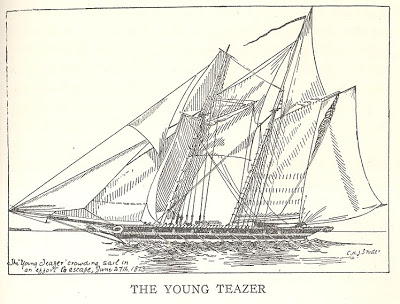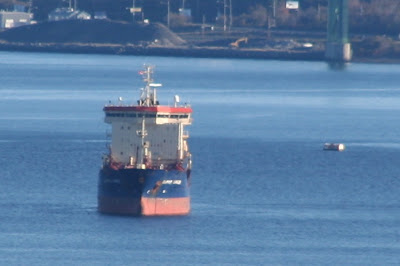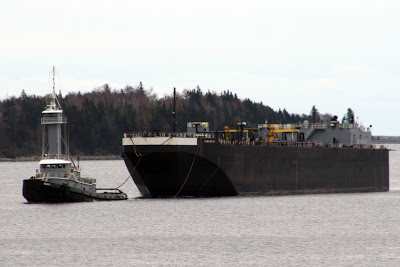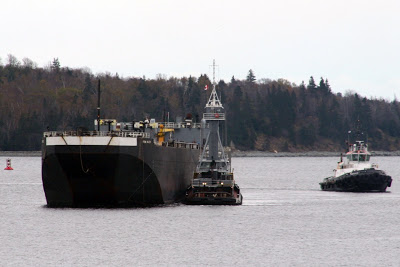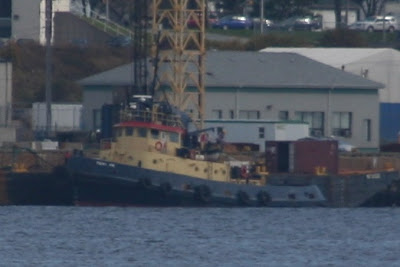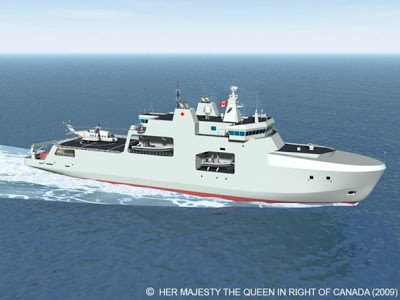Just after 5 pm the winners of the National Shipbuilding procurement strategy were announced.
Halifax Shipyard won the $25 billion Combat Ship contract, and Seaspan in BC won the Non-Combat ship contract.
Irving Shipbuilding gets to build 3 destroyers, 12 frigates and 3 arctic patrol vessels.
SeaSpan Gets the work on 2 support ships a polar icebreaker, and hydrographic survey ship.
The 3 Destroyers Are intended to replace the Current Tribals, It is very likely that these will again be Area Air Defence Destroyers, though there could be a role for a command and control vessel. I would expect these to look very much like Current destroyers being built in Europe, as Canada has invested in the development of many of the newer combat technologies used by Nato countries, but currently lacks a ship that can support them. As well US ITARS (International Trafficking in Arms Regulations) makes using US technology a pain. I would expect these vessels to be built after the Arctic patrol vessels, as the current Tribals are nearing the end of their lives (built in the 1970’s), and one west coast tribal has already be decommissioned.
The 12 frigates will be the last ships built. The current Halifax Class is just beginning there midlife refit, and should have another 15-20 years of life out of them.
The Arctic Patrol vessels are an interesting project. Though various plans have called for armed
icebreakers, I would expect that in the end, these ships will end up as Ice Class Patrol vessels similar to the Danish Knud Rasmussen class patrol vessels. These vessels are a complete warship, with air, anti submarine and surface weapons. A big advantage to a design like this is the small compliment -the Knud Rasmussen class has a maximum crew size of 43 which makes the ships cheaper to operate and easier to staff. These vessels could then also be used in non arctic regions, where the MCDV’s have proven to be too slow. Mac Mackay of Shipfax advocates a tug like vessel, like Icelands Thor – based on a Offshore tug design while this idea has merit, I suspect the navy has limited interest in towing (Coast Guard Job), and such a vessel would simply be too unconventional.
The SeaSpan contract Calls for 4 ships, all of which are needed in fairly short order. The Polar icebreaker is a replacement for the Louis St. Laurent, The Research Vessel is a replacement for the Hudson, and of course the 2 Replenishment ships.
The Replenishment ships have been a pain, as Navy commanders want a ship that can do Everything
– from command and control, Helicopter operations and replenishment at sea. The Command and control requirement should be built into the New Destroyers.. Such a ship would work Very much like the Danish Absalon Class ships. These ships are built for command and control, and are also armed similarly to the current Tribal Destroyers, as well as carrying two helicopters.
With the Command role removed, We should then end up building Something like a British Bay class.
The Bay Class is actually an Amphibious assault ship capable of carrying vehicles, cargo, helicopters and landing craft to deploy them. Canada would make excellent use of a vessel of this type. Now when disaster strikes somewhere in the world (think earthquake in Haiti), we would have a vessel that could transport and land relief supplies to an area, operate a hospital, and not be dependant on outside resources to offer assistance. To Fulfill the replenishment at sea role, Ensure sufficient Space for Aviation Fuel and Bunker fuel for warships – its unlikely such a vessel would need to fulfill both roles simultaneously.
You will note I used 2 Classes of Danish ships in my examples.. why? because they have similar requirements and operating environment to Canada. Im not saying we run out and build danish designs, but we should look at what our allies have, and Design our own to meet our needs.
Congratulations Irving Shipbuilding. Good Job.


